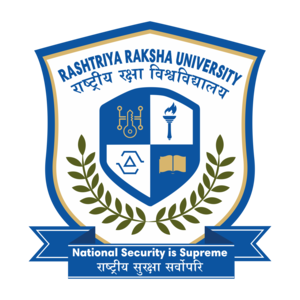
Feminism and Abortion
FEMINISM AND ABORTION
- Sarthak Bhardwaj
Equality - the primary goal of feminism - is at the heart of the Indian Constitution. Yet, the divide between this constitutional promise and reality is vast. Unequal pay, poor representation in public institutions, limited access to education, reveals an immediate need for reform.
The Indian judiciary has done much for this cause. Anuj Garg v Hotel Association of India (1) is a classic example. In this case, the constitutionality of Section 30 of the Punjab Excise Act (a colonial law) was challenged. The impugned Act barred persons licensed to sell liquor from employing women at a place where liquor or intoxicating drugs were consumed by the public. In 2008, the case proceeded to the Supreme Court after being invalidated by The Delhi High Court in 1999. The Government of Delhi argued that the intention of the law was to protect women from perils of employment in the liquor industry. The Supreme Court categorically rejected this argument, holding, that the law created ‘invidious discrimination perpetuating sexual differences’.
In landmark judgements like Anuj Garg, Shayara Bano (2), and Navtej Johar (3), the Court has rightfully rejected the notion of natural differences and attempted to perceive gender based discrimination as a product of socio-cultural institutions. However, the case of Air India v Nargesh Meerza(4) presents an alternate (and a dark) interpretation of sex discrimination. The aforementioned case was against Regulations 46 and 47 of the Air India Employees’ Service Regulations, which allowed for differential treatment of male and female flight attendants for the purposes of promotion, age of retirement and termination of services. In Nargesh Meerza, ‘separate-spheres theory’ justified discriminatory treatment by holding family planning, upbringing of children, and population control as the specific responsibility of women.
Therefore, we see that the entire debate around gender parity boils down to the concept of self- determination. Currently, the most pertinent question around women’s right to self-determination is with regard to abortion laws. As Raj Pal Mohan in ‘Abortion in India’ writes, “abortion is as old in India, as the Indian civilisation. In spite of universality of abortion, all cultures attempt to regulate it through social mores”(5). Ancient Hindu scriptures condemn abortion as a sin. Using these references, a largely patriarchal Indian society imposed their will on women and denied them their right of choice. For instance, Manu in his Dharmashastra opined, where women are not honoured, no rituals can yield the desired results, thereby equating denial of abortion with a woman’s honour. These antecedents mirror the history of abortion laws in our country.
Originally, abortion was a criminal offence for both, the woman and the abortionist, barring instances where it was necessary to save the life of the woman. To address these concerns, Shah Committee, led by Shantilal Shah was established in 1964. The goal of this committee was to suggest modifications in the abortion law. In 1966, the committee, after comprehensively studying socio-cultural, legal and medical aspects of abortion, made several recommendations to liberalise the abortion laws.
Based on Shah Committee’s findings, The Medical Termination of Pregnancy Act of 1971 came into existence. The MTP Act allowed (conditional) abortion executed by a medical practitioner, provided it was done in good faith and in accordance with the provisions of the Act and was within 12 weeks of pregnancy. If two registered medical practitioners were acting together, the length of pregnancy could exceed 12 weeks, but not 20. The Act of 1971 sought to achieve three primary goals. One, preserving life, physical and mental health of the woman. Two, to eliminate risks of a child being born with severe physical or mental deformity. Three, to provide humanitarian relief to victims of sexual abuse and crime. The MTP Act was accompanied by various rules over the years. The Union Government came up with ‘MTP Regulations’ in 2003 under which all Registered Medical Practitioners were mandated to keep abortion records to be duly submitted to Chief Medical Officer. Very recently, in March 2020, The Medical Termination of Pregnancy (Amendment) Bill was passed by the Lok Sabha. The Bill seeks to increase the upper limit for abortion to 24 weeks in some special cases such as vulnerable women including survivors of rape, victims of incest and others such as differently-abled women and minors.
However, when one explores these laws, it becomes apparent that they still look at women, primarily as mothers. This position is critiqued extensively by Gauri Pillai. In essence, Pillai argues, The MTP Act allows for abortion only under exceptional circumstances, implying that by default, women should continue with the pregnancy. The Act does not provide abortion as an independent right, but basis it on the presence of certain conditions. Additionally, the Act looks at abortion through the prism of a medical procedure, (as suggested by the name of the Act itself- Medical Termination of Pregnancy) and not ‘abortion’. The Statement of Reasons and Objects of the Act describes abortion as a ‘health measure’ and to prevent ‘wastage’ of life. The Act gives weightage to the opinion of medical practitioners and views them as “co- decison makers along with women”. “Women’s decisions to undergo an abortion are overridden if the Medical Board opines that the continuation of pregnancy is ‘less hazardous’ than termination at that stage.Thus, the medical risk of termination becomes the primary consideration while making a decision under the Act.”, writes Gauri Pillai. (6)
Therefore, a close study of India’s abortion law reveals how poorly it identifies with the vision of the Constitution. Our Constitution was supposed to act as a vehicle of radical social and cultural change. This reductive spirit of the abortion laws, then, clearly does not match the transformative characteristics of the Constitution. As per the laws, the fact that women can reproduce, is understood to mean that they must. Through this, women seeking abortion are seen as any other patient is. Abortion laws must be an enabler for women to undo historical wrongs and take back control over their bodies and lives.
It is evident that continued efforts in the field of abortion laws are required. Mere existence of legal safeguards does not ensure access to safe abortion services. According to the India Facility Survey(7), as of 2005, 94% of primary health centres and 69% of community health centres did not offer any abortion services. Even today, the cost of abortion remains a major concern for rural and middle class women. While abortion procedures in public sector are, prima-facie, free. They carry additional costs such as transportation or loss of daily wage. The private sector sets its own price which is grossly high and outside the reach of women who need it the most.
Furthermore, abortion is still perceived as a taboo in the Indian society. Women are coerced into continuing with the pregnancy. And, we saw earlier in this article, pregnancy and child birth are closely linked to the patriarchal concept of ‘family honour’. Above all, the interpretation of abortion laws is fundamentally against the vision of Constitutional Morality.
Thus, constant intervention, reforms and legislations is needed until all these hurdles are not permanently removed. India’s abortion law is a classic example of the fact that law on paper and law on ground are practised very differently.
REFERENCES
[1] Anuj Garg v Hotel Association of India, (2008) 3 SCC 1
[2] Shayara Bano v Union of India, (2017) 9 SCC 1
[3] Navtej Singh Johar and Ors v Union of India, (2018) 10 SCC 1
[4] Air India v Nargesh Meerza, (1981) 4 SCC 335
[5] Raj Pal Mohan,‘Abortion in India’ (1975) 50 (3) Social Science <https://www.jstor.org/stable/41885953?read-now=1&seq=3#metadata_info_tab_contents>accessed on 9 April 2020
[6] Gauri Pillai, ‘The Abortion Petition: Some Key Questions’ (Indian Constitutional Law and Philosophy, 22 October 2019) <https://indconlawphil.wordpress.com/2019/10/22/guest-post-the-abortion-petition-some-key-questions/> accessed 9 April 2020
[7] Melissa Stillman, Jennifer J. Frost, Susheela Singh, Ann M. Moore and Shveta Kalyanwala, ‘Abortion in India: A Literature Review’ (2014) Guttmacher Institute <https://www.guttmacher.org/sites/default/files/report_pdf/abortion-india-lit-review.pdf> accessed 9 April 2020












